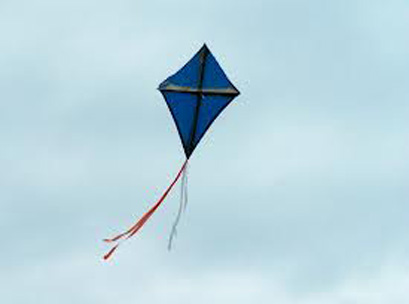Do you know where your customers really come from? Please read the following paragraph and tell me what am I writing about: A newspaper is better than a magazine. The seashore is a better place than a street. At first it is better to run than to walk. You may have to try several times. It takes some skill, but is easy to learn. Even young children can do it. Once successful, complications are minimal. Birds seldom get close. Rain, however, soaks in fast. Too many people doing the same thing can
also cause problems. One needs lots of room. If there are no complications it can be very peaceful. A rock will serve as an anchor. If things break loose from it, however, you will not get a second chance.
Pretty difficult, and unless you consciously or subconsciously were influenced by the image below, you probably had no idea.
But the image is the clue: Look at the image (of the kite) and then read the paragraph again. This exercise was grabbed from a leadership program where an Air Force officer spoke about the time where her aircraft maintenance team achieved no more than a 58 per cent success rate (in terms of generally having the fleet battle ready) at the very best. Until she was called out one night to go into the battlefield with a small crew to get a stricken aircraft flying again.
One of the pilots made this observation: “If they don’t fly, people die.” That remark changed everything. Within weeks they achieved 100 per cent on their key benchmark – and stayed very close to it after that.
The only thing that changed was her context. After being on the frontline and experiencing first hand the consequences of the 58 per cent score, she changed how she thought about what is possible.
For an example closer to home, watch the SBS series: Go Back to Where You Came From. Whatever your political persuasion, you will see how people change their views when they change their context.
The point is not that one has to have experienced something first hand – but whatever it takes for you to get the context. Firsthand experience is the most obvious and in some ways the easiest path to context. (The other way is that much neglected strategy: thinking.) What are the practical applications of this idea?
1. The toughest thing in retail is to really walk in the shoes of your customers – and not to merely think you are.
2. When you recruit and manage staff (e.g. Gen Y) you are inclined to want them to be like you. The reason why they behave the way they do, is because they have a different context to you.
3. If your employees are not committed to great customer service, they either don’t have the skills or they don’t understand the context. Create a burning platform to make them appreciate the urgency and the importance.
I could go on, but you get the idea. If you want to fix your customer experience; an important requirement is for every stakeholder to really understand the context of the other stakeholders. Easily said, harder to do, but it can be done.
“I know where you are coming from” might be a cliché, and unfortunately it is usually said but not meant. If you really know where your customers/staff/suppliers are coming from, then selling, service, and negotiation becomes a whole lot easier.
Have fun
Dennis
GANADOR: BUILDING HIGH-PERFORMANCE NETWORKS FOR BRANDS AND RETAILERS
PS: In case you missed it last week, there are two really exciting retail concepts that we can learn from: Hointer and C.Wonder. Both are cool and worthy of your time.

